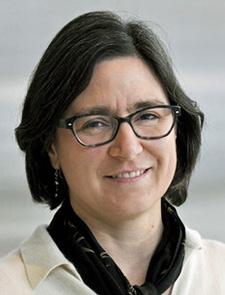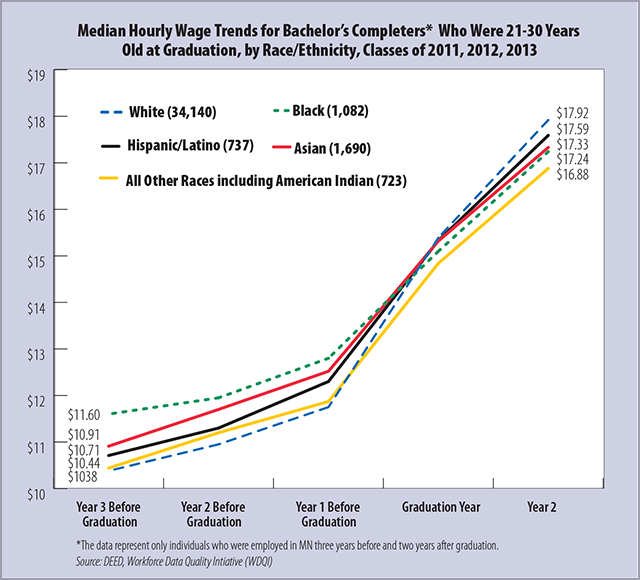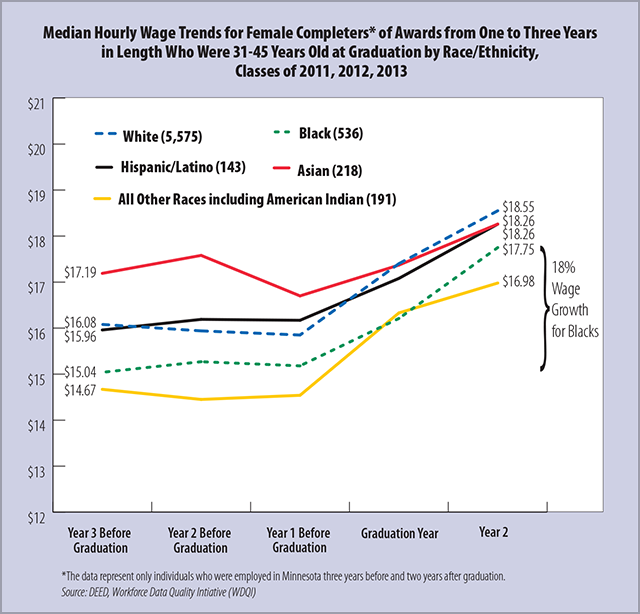When Isaac Ogata was a civil engineering student at the University of Minnesota three years ago, he did one of the hardest thing a student could do: He worked 40 hours a week.
That meant passing up internship opportunities, which employers nowadays are increasingly seeking in new college graduates. But Ogata needed money from his full-time job as a shipping material attendant at Emerson Process Management in Eden Prairie.
When he graduated in 2012, the company promoted him to a supervisory position in the same department. But the job wasn’t an engineering job, and he wanted to work in his chosen profession.
“I used to send 30, 40 applications every week,” he noted. “Out of those, I sometimes got regret letters. Sometimes I didn’t even get a response. A few times, I was called for interviews, but they didn’t yield to something. I was never offered even a second interview.”
According to a detailed report from the Minnesota Department of Employment and Economic Development (DEED), Ogata’s experience is not uncommon. Examining wage and employment differences between white Minnesotans and those from minority backgrounds after obtaining post-secondary degrees, what it found was that thousands of Minnesotans from racial minority groups are struggling to land full-time employment related to their majors, and often earn less than their white counterparts.
Minority grads more likely to hold temp jobs, get paid less
The report, Racial Disparities in Wages and Employment after Graduation, used data from 150 community colleges and universities across the state.
Researchers divided the group into two categories: Those who completed post-secondary education between the ages of 21 and 30 and others who completed their studies between 31 and 45 — expecting the older cohort would gain higher pay after graduation because of their work experience before getting a degree.
The report found a larger number of white and Asian graduates represented in high-skill and high-pay industries than black workers in the first two years after graduation. That’s because whites and Asians chose majors — such as business, IT, engineering — that are in-demand and pay higher wages.
In these high-skill industries, not only do these workers gain high wages, they also get opportunities for professional development and promotion.
Black and American Indian college grads, on the other hand, were concentrated more in low-paying industries such as nursing and residential care facilities, social assistance and restaurants.

Nor were graduates between the age of 21 and 30 represented in the work force equally in Minnesota: Nearly 16 percent of black graduates ended up in temp jobs, for example, compared to 4 percent of whites and 10 percent of Asians.
And those numbers held true not just in one industry, but across the board. “There is a greater share of [blacks and American Indian] working part-time, whereas whites and Asians have a greater share of working full-time,” said Oriane Casale, assistant director of labor market information at DEED. “We’re talking about a very large group of workers … in the economy who can only find part-time jobs, but want full-time jobs.”
The report also examines wage disparities between white and minority workers two years after graduation, and it found that white grads earned more than other groups — even when controlling for age and degrees.
“Over a six-year period that extended two years after graduation, wages grew 44 percent for whites,” DEED’s Alessia Leibert wrote in the report, “and only 18 percent for blacks.” The wages grew 33 percent for Asian grads, and 30 percent for Latinos.
“Students who are coming out of school, no matter what race, are good at finding employment,” Casale added during an interview. “What the difference is that they find employment in different industries and they find different wages.”

When researchers compared wages of blacks between 21 and 30 to those of other races before graduation, they found that blacks actually earned higher wages. But that changed after graduating. The wages for white grads grew 73 percent in 6 years compared to 49 percent for blacks. That compares to 64 percent for Latinos, 59 percent for Asian.
Prior to the Great Recession, few minority groups attended post-graduate schools. But during and after the recession, Minnesota tech colleges and universities saw a hike in enrollment among racial minority groups.
Enrollment for black students, for example, reached 14 percent in 2013, compared to 5.9 percent in 2007. Much of the growth in enrollment was the result of a tightened labor market during the recession. At the time, employers increased the minimum job requirements to suppress the overflow of job applicants, and the market forced many Minnesotans who might otherwise have not attended college to seek college-level retraining.

Before earning post-secondary degrees, black men between the ages of 31 and 45 “had a significant wage disadvantage,” compared to other groups, according to the report. Later, the report found, wage trajectories improved, possibly as a result of the workers attending post-secondary schools. A post-secondary degree among those 31-45 pumped up wages for blacks by 24 percent, compared to 9.7 percent for whites, 9.5 for Asians and 4.3 for Latinos. This led to the difference in wages between comparably employed black and white men to drop to $1.26 within two years after graduation, from $3.14 three years before graduation.
The report found that wage disparities also persist among women. “Asians, whites and Latinos had higher starting wages than blacks and all other races, and they maintained that advantages after graduation,” Leibert notes in the report. “But while credential attainment helped reduce the initial wages gap, it was not enough to eliminate it.”

What are the remedies?
The report doesn’t delve into the cause of the employment and wage disparities; although experts note that discrimination plays a role. But there are also other factors that may contribute to those disparities, including a lack of employee networks and internship opportunities for minority groups.
Even when minority workers attain the right credentials needed in the labor market, they may need more time to land full-time jobs in their chosen fields. Casale said that many individuals in minority groups feel the need to take any job after graduation because they need to earn paychecks immediately after college to support themselves and their families. So they end up taking jobs that pay less or jobs in fields other than their chosen profession.
That was the case for Ogata. After earning his civil engineering degree in 2012, he held on to his supervisory job at the factory until the end of 2014, when he decided to walk away for a temp engineering job. “There was no guarantee of even one year employment,” he said. “But I said ‘OK, I’m going to take the risk. If things go really bad, I may start looking for another factory job.’ ”
In May, Ogata’s sacrifice paid off: The temp job turned permanent.
To assure more students don’t have to go through the same sort of hoops that Ogata did, experts recommend that colleges and universities create informational resources for minority students so they have the right employment networks during and after their graduation. They also recommend that support services help these students complete their credentials soon after high school “so that they can start utilizing marketable skills and building a career at as young an age as possible.”





wage disparity
This report states nothing new. After receiving my degree in 1970, I worked in corporations and (as a minority female) was paid lower salaries than Caucasian women who were paid lower salaries than Caucasian men. Minnesota businesses has taken no significant strategies to provide equal pay in all businesses because most private businesses are operated by Caucasian men. Businesses will act on the minimum federal and state laws that says they are meeting legal requirements in a state that has one of the lowest diversity rates.
Educate teenagers
You would be doing teenage minority and female students a tremendous favor by being frank and honest with them on the following:
1) Do not major in Female Studies or Black Studies if you want a job in business.
2) Resist majoring in sociology, politically science, psychology, etc. if you want a high paying job.
3) Take as many STEM classes as you can in high school and seriously consider a STEM major in college.
3M had a very hard time attracting minority engineers. When we found one, we had a very hard time making a competitive offer since their starting salaries were 50-100% higher than other engineers.
Please clarify
What do you mean “their starting salaries were 50-100% higher than other engineers”?
Do you mean “they asked for starting salaries 50-100% higher than other engineers”?
Are you a hirer at 3M? Please state where you got your information.
Thank you.
I hate these “studies”
There are no proper controls. It’s WAAAY to high level to really understand the problem, which, by the way, is not as simple as Mr. Downing’s comment suggests–STEM degrees do not automatically level the playing field. He is right, though, that you can’t lump arts major degrees with science major degrees and claim disparities. He is, of course, assuming that women and minorities disproportionately major in social degrees while white males somehow put their noses to the grind stone more often with STEM degrees. Yep, women and minorities are (generally) underrepresented in STEM majors. However, that doesn’t explain the pay gap in its entirety–and this is why I hate these sorts of fuzzy articles. There IS a pay gap, but by being so insufficient in the way it’s analyzed, it provides ammo for the “nuh uh, get a better degree and it will go away” crowd.
The thing is, there are various industries and professional organizations that look at pay, and they do so with a high degree of specificity. Why aren’t we using this data in a bigger way? For example, in the food industry, women with the same degrees as men are STARTING with a lower average salary (and it’s significant). That is, men with no experience are paid more than women with no experience. There is no way to explain the discrepancy based on experience or degree.
In intellectual property law, you can actually track work done and quality of work by looking at billable work done and how much of it is actually billed to a client. Again, there’s a gender gap that can’t be explained by lower quality work or experience, since the actual billed rate can be used to normalize income and women are paid significantly less for billed work than men in law firms.
While racial disparities aren’t tracked in these two cases, it’s not hard to believe that if there’s an obvious and measurable gender gap with no apparent explanation other than gender, it’s likely that there’s an obvious and measurable racial gap.
Educate teenagers
You would be doing teenage minority and female students a tremendous favor by being frank and honest with them on the following:
1) Do not major in Female Studies or Black Studies if you want a job in business.
2) Resist majoring in sociology, politically science, psychology, etc. if you want a high paying job.
3) Take as many STEM classes as you can in high school and seriously consider a STEM major in college.
3M had a very hard time attracting minority engineers. When we found one, we had a very hard time making a competitive offer since their starting salaries were 50-100% higher than other engineers.
Discrimation plays a major part
Almost 10 years ago I graduated with a degree in information management. I worked full time at Wells Fargo while going to school. After I graduated my best friend from college got a job with United Health Group. I applied more to over 30 businesses and ofcource like Mr. Ogata, I occasionally received one interview or none at all. Eventually I got stuck in the mortgage industry and my friend who is a white woman continues to excel at United Group. Even as I worked in the mortgage industry I continuously get passed on for promotion even though majority of the work is done by high school graduates which includes loan processing, underwriting and other mortgage jobs. Blacks especially were limited mostly to customer service jobs. Eventually my work at US Bank was constantly marred with discrimination where managers made sure that as a minority I was denied promotion opportunity even with stellar annual reviews. Guess what I eventually decided to leave the vicious cycle in the business world and their discriminatory practices against minorities. Check big businesses like Wells Fargo, US Bank, TCF Bank, 3M. United Health and the list goes on and on; majority of their temp workers are blacks. With a Masters degree; I don’t care what any one says; for those of us who have lived it; it is pure DISCRIMINATION. I want these businesses to start doing the right thing. The schools can follow by providing mentoring opportunities for black students on making the right choices when it comes to career path. If you doubt me; let the businesses show you their books on their hiring and promotion practices and you will be shocked. Majority of us know the truth so let’s quit pretending and start giving our Black Minnesotans the opportunity they deserve. It iss called INCLUSION